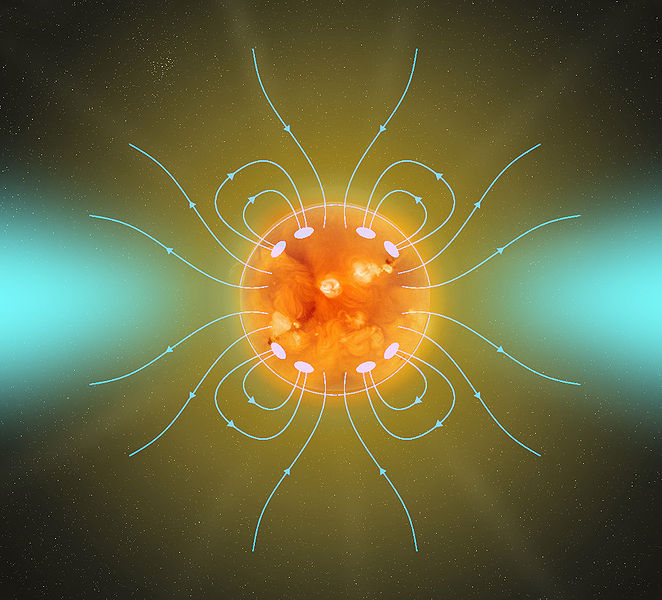The solar wind is key to quantifying and understanding ‘Space-weather’ – the local solar system environment. This has direct bearing on humankind not only for the safety and security of space travel, satellites and communications, but also for the potential disruption to both communications and (electrical) power infrastructures based on Earth. On a more benign nature, the solar wind gives us the Auroral displays seen at high latitudes.
The concept of a solar wind, a particulate outflow from the sun, had historically been suggested in a number of guises by each of Richard Carrington (b.1826 d.1875), Eddington (b.1882 d.1944) and Kristian Birkeland (b.1867 d.1917). The idea however gained prominence when in 1951 Ludwig Biermann (b.1907 d.1986) proposed a ‘solar corpuscular radiation’ to explain the observation that cometary tails always point away from the Sun.
Today, we classify the solar wind into two principle types, low speed and high speed. The solar wind comprises, protons (ionised hydrogen) and electrons in approximately equal number, and a small proportion (typically 3%) of fully ionised helium (alpha-particles). Typical and average characteristics of the wind types are:
Density (atomic particles / cm3) 10 – 20 6 – 10
Speed range (km / s) 250 – 400 400 – 900
Proton kinetic energy* 34,000K 225,000K
Electron kinetic energy* 130,000K 100,000K
Predominant source Equatorial Streamers Coronal Holes
(Toroidal field)
* ≡Temperature
Please do note though that the figures are typical and average, the solar wind (both forms) is highly variable in all of these characteristics. The Sun’s magnetic field is both complex and very dynamic and the rotation of the Sun leads to shock waves in collisions between the fast and slow streams.
To see how and from where the solar wind originates we will look at a very simplified model of the Sun as per figure below:
(image used courtesy of Sebman81, Wikimedia commons
The high speed wind originates only from the polar regions, and in particular coronal holes. At solar maximum, the dipolar and toroidal fields are effective in ensuring that almost the entire corona is encompassed by closed magnetic loops. As the solar cycle progresses, the magnetic loops at the poles become both stretched and disconnected and thus open. Hence the high speed wind is stronger, (’more-blowy’!) at solar minimum. We are at a solar minimum phase today.
A coronal hole is an area where magnetic field lines diverge (or in other words, the field is open). They are called ‘holes’ because within (x-ray wavelength) photographs they are darker than the surrounding areas. This is due to these areas being ~600,000K cooler than the surrounding ~2 million Kelvin, atmosphere.
The Skylab orbiting laboratory confirmed, in a series of observations made between 1973 and 1974, that the source of the high speed wind was coronal holes. This was amplified and extended by the Ulysses satellite (launched 1990) which orbited the Sun at high solar latitudes. This provided direct observations that the coronal holes/source of high speed wind expands towards the equatorial regions as the solar cycle progresses. Both high speed and low speed winds are highly variable.
The solar wind of course means that the sun is losing mass. This does not mean that the corona, or indeed the chromosphere, is becoming less dense. High energy events known as prominences, flares and the very descriptive coronal mass ejections (CMEs) can add to, (and in the case of CMEs also deplete) the mass and density of the corona.
The mass loss due to the solar winds can be estimated and recent valuations put this at circa 4.7 x 10**16 kg per year. This is a large number. However, to put the loss in context, it’s about 1/3rd of that lost due to solar fusion processes and just under 10**-8 times the mass of the Earth. Or, in other words, the Sun can quite happily continue to lose mass at this rate for the next billion years and lose about 3 ten-thousandths of its mass. So this is really not a problem!
Further reading
(In ascending level of technical complexity)
[1] The Sun – Shining light on the Solar System. Neil Taylor. 2017
https://www.observatoiresolaire.eu/solar-physics.html
Next Month
Next month’s blog will be issued on Saturday 30th June.


